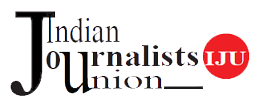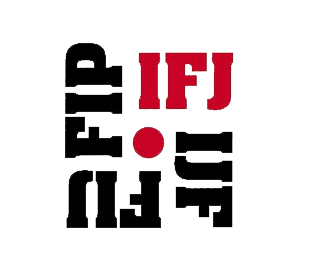~ Geetartha Pathak
The word 'censorship' always reminds us of the days of Emergency, imposed by the Indira Gandhi on 25 June, 1975. Congress led by Indira Gandhi was ousted from power in the elections held after revoking emergency in 1977 and it paved the way for union of motley group of opposition parties to form Janata Party to grab power at the centre and many states as well.
The struggle for freedom of expression is as ancient as the history of censorship. The most famous case of censorship in ancient time is that of Socrates, sentenced to drink poison in 399 BC for allegedly corrupting the youth and his failure to acknowledge the Gods that Athens acknowledged and introducing new deities. However he was not the first person to be punished for violating moral and political code of his time. In Europe in the middle age, the church controlled all the educational institutions. No book could be printed or sold without permission of the church. Without going through the history of censorship, we can say that censorship persists even now but has changed its attire. At times it even comes in camouflage.
Attacks on freedom of expression and freedom of media in South Asia have alarmingly increased last year. International Federation of Journalists (IFJ) reported that Asia Pacific was the world's deadliest region for journalists. The international journalists' body said that the most dangerous place for journalist to work is the Asia Pacific, which features 3 of the top 10 worst countries for journalist killings in the past 25 years. Five journalists have become victims of targeted killings in India in 2017. Apart from journalists many social activists, writers, filmmakers, actors have faced direct and indirect attacks during last three years. Killings of M M Kalburgi, Gobinda Panasare, Narendra Dabholkar, attacks on authors like Perumal Murugan, cartoonist Bala, on five intellectuals from Assam for just attending a meeting organized by minority organizations, a theatre personality from Karnataka Yogesh Master, rationalist Professor Narendra Nayak are indicative of increasing attacks on freedom of expression in the country. In Chhattisgarh, the government disclosed on the floor of the state assembly on 21 December last that 14 journalists were arrested till November of 2017.
The common character of most of the journalists arrested in the state was they relentlessly exposed police excesses in the name of anti Naxalite operations. One of the arrested journalists is Vinod Verma, who was picked up from his home in Ghaziabad, near Delhi for allegedly featuring Rajesh Munat, a Minister of the state to extort money from him. He was a journalist activist who was part of the Editors Guild of India fact finding team that visited Jagdalpur, Bastar and Raipur districts last year to verify threats faced by journalists of Chhattisgarh. The journalists who dare report against police excesses are regularly hounded.
In Kashmir targeting of journalists by police and security forces has become a new norm.
Arrest of a 23 year freelance photo journalist Karman Yusuf who regularly contributed to valley's largest circulated English daily Greater Kashmir was beaten by the forces on 5 May 2017. The security forces alleged that he was involved in stone pelting. Later he was arrested by National Investigative Agency and charged with sedition. It is unfortunate that Greater Kashmir disowned Karman for fear of facing trouble. The GK's decision to dissociate from Karman Yusuf evoked sharp reaction among local journalists. Indian Journalists Union (IJU) and International Federation of Journalists condemned Karman Yusuf's continued detention.
Recently Unique Identification Authority of India (UIDAI) has registered an FIR under Indian Penal Code sections 419 (punishment for cheating by impersonation), 420 (cheating), 468 (forgery) and 471 (using as genuine a forged document) against 'The Tribune' newspaper based in Chandigarh and its reporter Rachna Khaira for publishing a report on 3 January that Aadhaar data was available for a fee. It is strange that the UIDAI instead of taking action against corruption within its system, was targeting 'The Tribune' and its reporter who exposed the corruption and criminal breach of trust by its own staff who were selling the information.
The controversy surrounding Sanjay Leela Bhansali's big budget film 'Padmavat' has not simmered down even after clearance by the Central Board of Film Certification with a suggestion for a few changes including change of the title from Padmavati to Padmavat. Even Supreme Court's ruling in favour of Padmavat could not pacify the recalcitrant Hindutva forces and they are preventing the screening of the film. Directly curbing the rights of artistes, writers, filmmakers or any other cultural workers to interpret history and reality in a creative way is sheer censorship. However, exerting psychological pressure on the creative cultural or literary persons by violent or coercive means produces an oppressive environment than the censorship itself. It leads to self censorship which is devoid of a legal face. The freedom of expression and creative interpretation of past and present are being held hostage by various nationalist political and religious organizations. The tendency of the state to rewrite history to suit the outlook of the ruling classes and their cohorts, erecting and demolishing statues, drawing pictures, composing songs to match the colours of the powers that be is antithetical to the concept of participatory democracy.
In the introduction to the United Nations plan of action on the safety of journalists and the issue of impunity it is quoted: 'Every journalist killed or neutralized by terror is an observer less of the human condition. Every attack distorts reality by creating a climate of fear and self censorship.' According to International Freedom of Expression and Exchange (IFEX), in nine out of ten cases, the perpetrators of these crimes are never prosecuted. The international media freedom bodies have expressed concern that the impunity which may be understood as the failure to bring the human rights violations to justice, perpetuates the cycle of violence against journalists and must be addressed. The UN Plan of Action on the Safety of Journalists is being monitored under UNESCO's International Programme for the Development of Communication (IPDC). The plan has explained why the freedom of expression and media is crucial for development of society.
Without freedom of expression and particularly freedom of press, an informed, active and engaged citizenry is impossible. In the climate where journalists are safe, citizen find it easier to access quality information, many objectives such as democratic governance and poverty reduction, conservation of environment, gender equality and the empowerment of women; justice and culture of human rights, to name a few, can be attained.
The curtailment of freedom of expression deprives society of the journalistic contributions and results in wider impacts on press freedom where a climate of intimidation and violence leads to self censorship. In such a climate societies suffer because they lack the information needed to fully realize their potential. In the present socio political environment where fear and threat rules so called democracy and diversity of opinion is homogenized by bulldozing freedom of expression and freedom of media, Vikas or development sabka sath is impossible.



